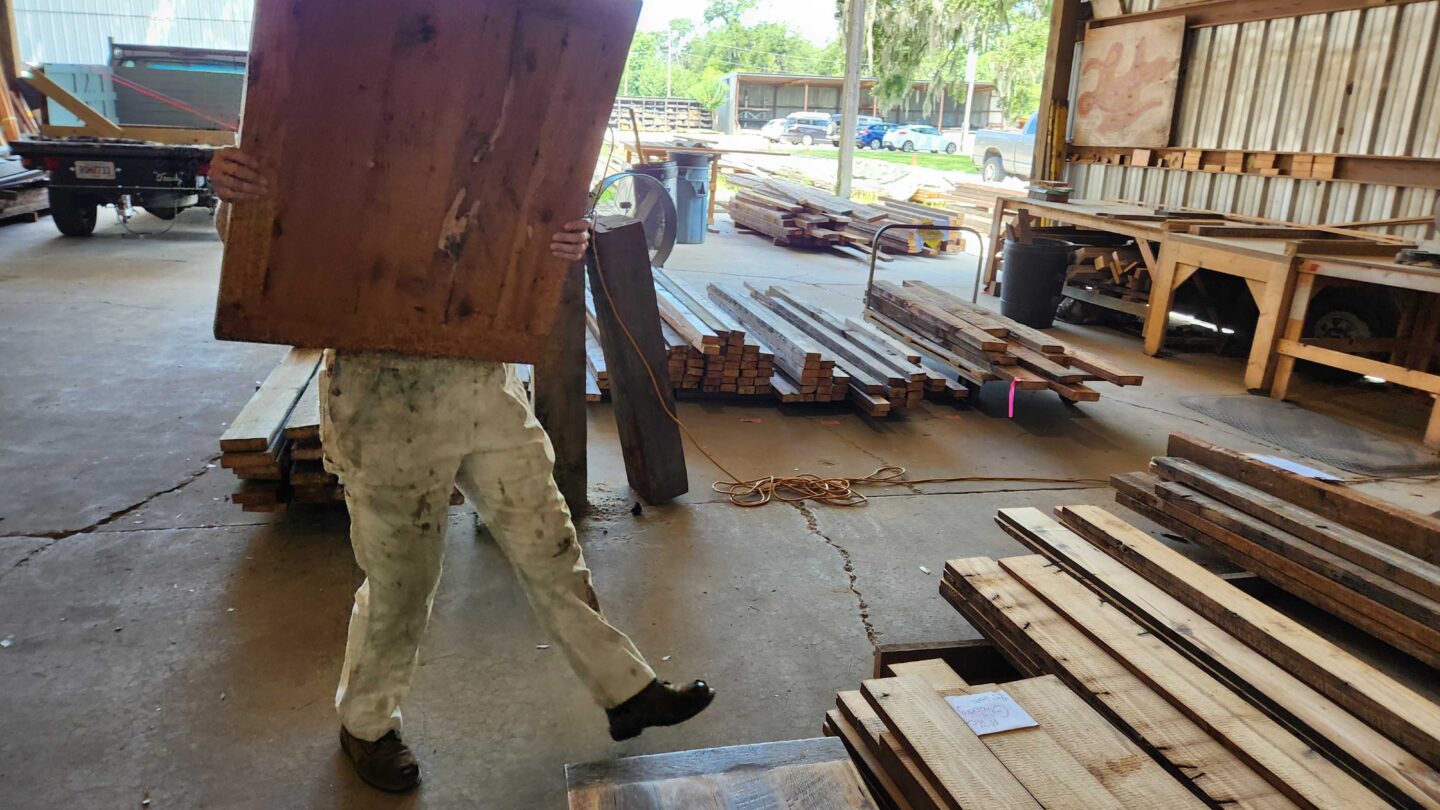This coverage is made possible through a partnership between WABE and Grist, a nonprofit environmental media organization.
At the Re:Purpose Savannah warehouse on the coastal city’s east side, staff and volunteers spent a recent morning unloading wooden panels from a pickup truck, reglazing old windows and using a metal detector to find and pull out nails in used wood.
“The materials come from the historic buildings that we lovingly deconstruct,” explained Jordan Lynch, the organization’s salvage manager. “We salvage every piece that does not have bug damage, dry rot or water damage.”
By deconstructing instead of demolishing buildings, they save anything that can be reused, instead of sending it to a landfill to decompose. That’s important, because as materials break down in landfills, they release emissions that contribute to climate change.
As of 2018, the most recent data from the U.S. Environmental Protection Agency shows that construction and demolition produced more than twice the waste of municipal trash.
Organizations like Re:Purpose are trying to chip away at this problem. So is the Lifecycle Building Center in Atlanta, which also does deconstruction and takes donated materials for reuse.
“It is kind of stupid to throw things away that still have a lot of useful life in them,” said Lifecycle executive director Shannon Goodman. “We just need better systems and processes to capture and redistribute those materials.”
One step toward improving the system, Goodman said, is better data.
Her organization works with a national group called Build Reuse, which just received a six-million-dollar federal grant from the Inflation Reduction Act to track and report data from reuse programs. It will help create scorecards showing all the energy and resources that go into making materials.
“It helps somebody who is picking materials for their next project, to understand what are the sustainability attributes of that product?” said Goodman.
The idea is that consumers will be able to directly compare the amount of energy and carbon emissions that went into making brand new lumber, or siding, or light fixtures, versus reusing materials that already exist.
“It’s absolutely revolutionary,” Goodman said.
The hope is that by quantifying reuse, making deconstruction easier and making salvaged materials more widely available, individual consumers and even large developers can make more efficient and sustainable decisions.
Beyond sustainability, reuse can also help preserve the past – both manmade and natural.
The Atlanta Wood Foundation works to keep fallen and felled trees from around metro Atlanta out of wood chippers and landfills by instead milling and kiln-drying them, creating unique wood slabs that can be used for furniture and other projects.
“These trees get to live on as a new, beautiful dining table,” said Kelly Syed, director of administration at the Atlanta Wood Foundation. “That wood will outlast all of us if it’s taken care of. People can pass it down to their kids and their grandkids.”
She said milling the donated trees means that they sometimes end up with rare or unusual wood that’s not found in most lumber yards. The foundation has handled sassafras and deodar cedar. Syed said that a woodworker would be hard-pressed to find both types of lumber elsewhere.
Re:Purpose and Lifecycle, too, often get materials that just aren’t sold in modern home improvement stores.
The Re:Purpose warehouse is full of lumber made from old-growth longleaf pine trees, which grew across much of Georgia before they were cut down and replaced with faster-growing pine trees used for modern lumber. People restoring old buildings in Savannah can often find the exact old materials they need, according to Re:Purpose marketing manager Yolanda Morris.
“We have people come in here with a piece of like three inches of trim and like, ‘I need to match this to match the existing trim in my house,'” she said. “I’m like, ‘Sure, we’ve got it.’ We can make those dreams happen, which is always fulfilling to see.”
Because so many of Savannah’s buildings are historic structures built with beautiful old materials, Morris said, there has to be an alternative to throwing that all in the trash when a building gets torn down.
“Part of Savannah’s history goes every time,” she said.
By salvaging those old materials for reuse, Morris said, they’re keeping that history alive.









